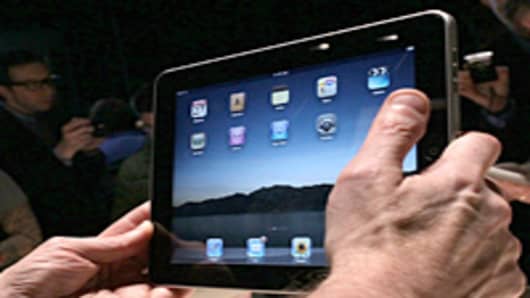The company already sells an iPhone application for GQ. That has sold more than 15,000 copies of the January issue and almost 7,000 of the December issue.
Condé Nast plans to test different prices, types of advertising and approaches to digitizing the magazines for several months before wrapping up the experiment in the fall. “We need to know a little bit more about what kind of a product we can make, how consumers will respond to it, what the distribution system will be,” said Thomas J. Wallace, editorial director of Condé Nast.
The magazines were chosen for their range, he said. “They are representative of the company, right? GQ is men. Glamour is women. Vanity Fair is a dual audience. The New Yorker is unique with its periodicity, and therefore it’s also more news- or text-heavy, and it’s a slightly older audience,” Mr. Wallace said. And Wired has already been working on a reader project with Adobe, the software company that provides publishing tools to much of the magazine industry.
Other than Wired, the digital magazines will be developed internally. “We’re taking a two-track approach partly because we want to learn everything that we can,” said Sarah Chubb, president of Condé Nast Digital.
During the test phase, the company will sell the digital magazines through iTunes. Wired will also be available in non-iTunes formats. While that means Condé Nast will not have access to consumer data — a valuable tool for its marketing — Ms. Chubb said there were other ways to get that information.
“There are opportunities within the application if you give the consumer a good reason to register,” she said. She cited an example on GQ’s Web site called “GQ Rules,” where visitors must register to see fashion tips.
Ms. Chubb said the company had not decided on the appearance of the ads. “What we’re looking at right now is what kind of ad units for a phone and iPad would optimize the experience for a consumer,” she said. “As an example, if you’re a fashion retailer or a fashion advertiser who also has an e-commerce store, how can we make the simple fact that you can click through to an item and buy it kind of great? How do you romance it a little bit more?”
Mr. Wallace said that once the company had figured out what worked and what did not on the iPad, it would think about digitizing other magazines. “If we are happy with the results that we get, we’ll be ready to go in the fall,” he said.
Charles H. Townsend, president and chief executive of Condé Nast, said in an e-mail message that the company was being public about its intentions with the iPad to “take a leadership position.”
“We feel confident enough that consumers will want our content in this new format that we are committing the resources necessary to be there,” Mr. Townsend said. “How large a revenue stream digitized content represents is an answer we hope to learn through this process.”


